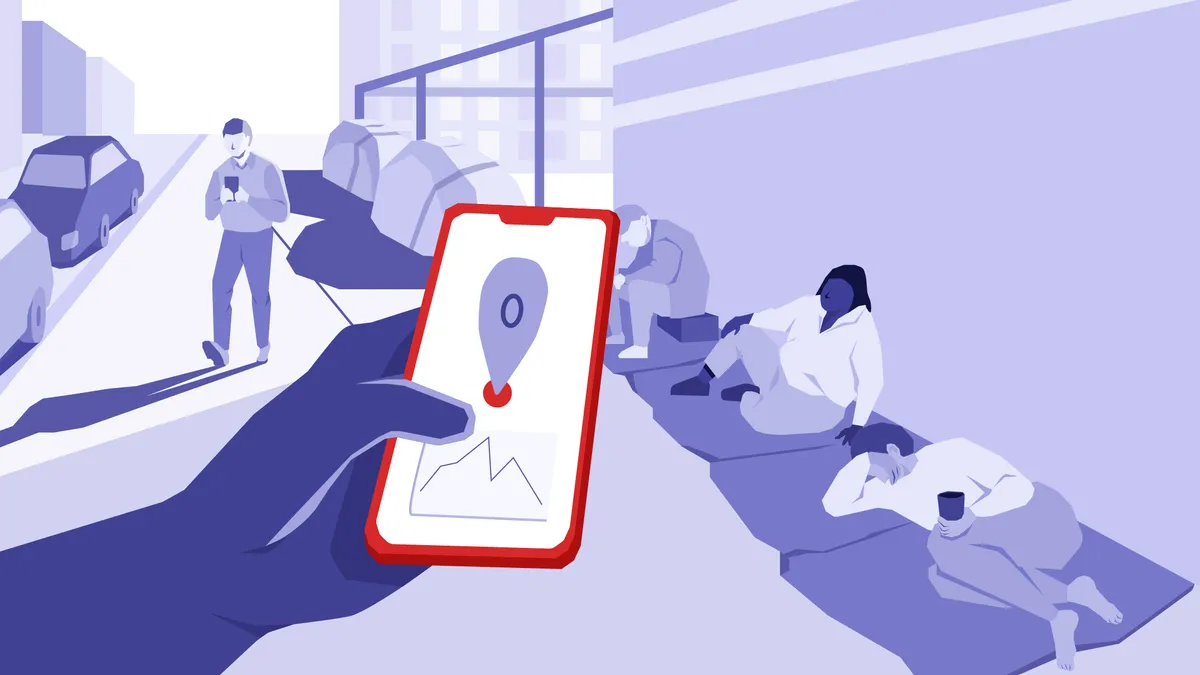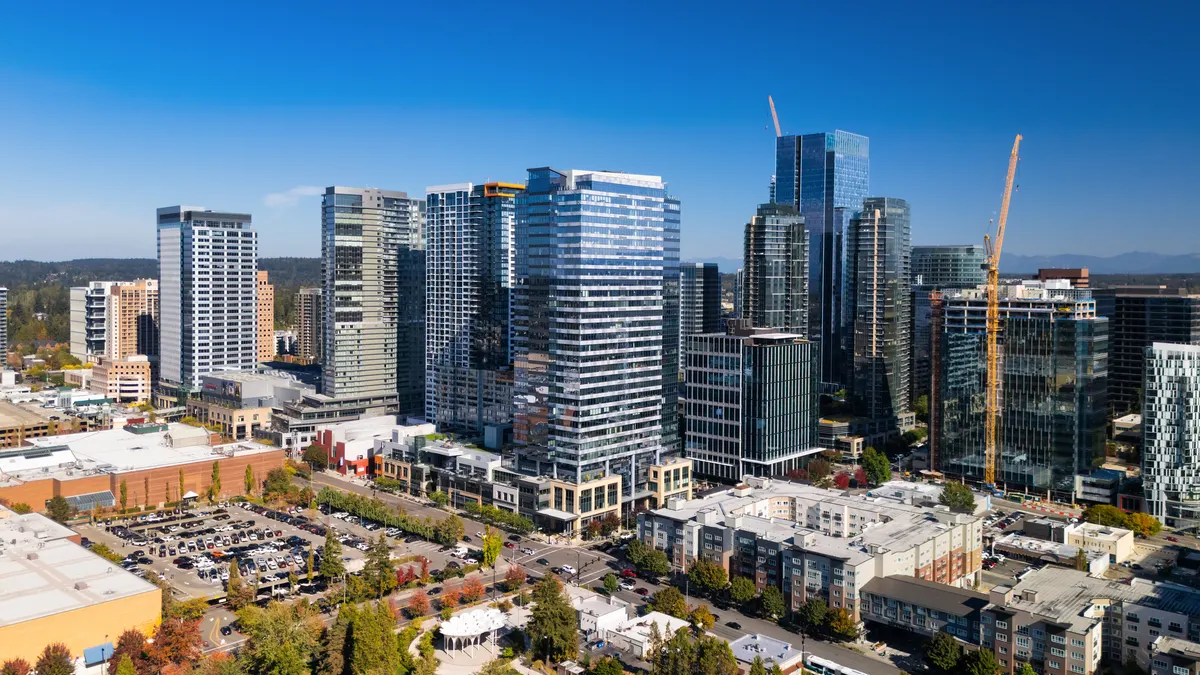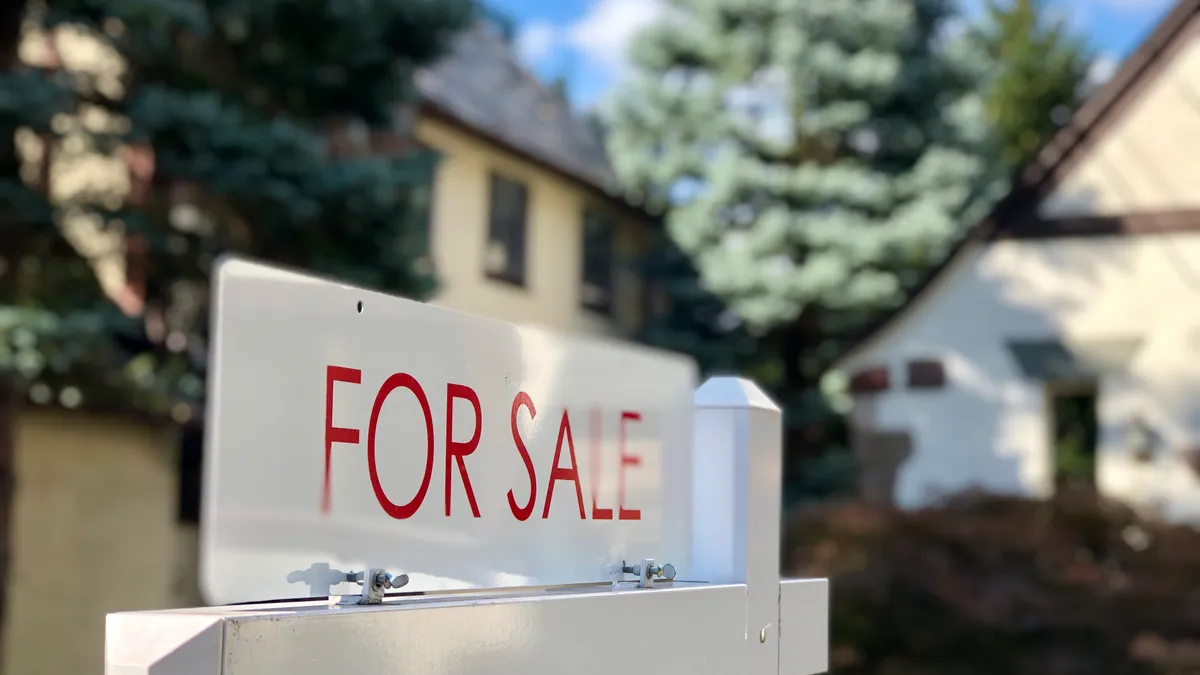San Francisco and Seattle residents are becoming increasingly familiar with an easy-to-remember phone number: 311.
As income inequality widens and tech companies continue to stake their claim in West Coast cities, a growing number of people are left without affordable housing. As a result, there's been a surge in homeless encampments or "tent cities" that are often reported by local residents via 311.
Individuals without housing in San Francisco surged 17% from 2017 to 2019. The Seattle Times reports that King County, WA, home of Seattle, saw an 8% decrease in the county's homelessness in 2019, but that estimate is doubted by a city council member and service providers. And despite the reported decrease, there was a 309-person uptick of people living in tents or unsanctioned encampments.
The encampments have stirred a back-and-forth debate among business owners, residents and local politicians about how to "deal with" the homelessness problem. True to form, many cities have proposed tech-oriented solutions using apps to locate homeless people and get individuals off the street. But many questions remain about whether or not the apps are a "smart" solution to homelessness, or a waste of government money.
To app or not to app
Apps allow community members to report encampments quickly and remotely, providing the ability to send a report directly to the corresponding city department. If someone experiencing homelessness is loitering at a local business or if they appear to need medical attention, all it takes is a few clicks to make the city aware.
San Francisco has touted their technology as a "lifeline," a smart solution to a widespread problem, and a way to get help quickly for people living on the streets. Others have called it a "snitch" app.
Seattle's "Find It, Fix It" app is a mobile version of the city's 311 number. Residents can alert the city to public problems with a message including a location and description. Users submit issues by category, such as illegal dumping, potholes, dead animals, and "other inquiries," allowing residents to report encampments, city spokeswoman Cyndi Wilder told Smart Cities Dive in an email interview.
"With 'Find It, Fix It,' reporting an issue is as easy as snapping a photo with your smartphone," according to the City of Seattle Website.
However the app has faced particularly strong backlash. Homeless advocates and contracted service providers call Seattle's effort "seriously disturbing," and "at best, pointless."
"Smart policy makers and elected officials should know better than to use technology for what might offer the illusion of a quick fix," said Alison Eisinger, executive director of the Seattle/King County Coalition on Homelessness, in an email to Smart Cities Dive. The "Find It, Fix It" app has received similar public backlash as well as hundreds of false reports, which took city employees a full day to manually sort.
"Smart policy makers and elected officials should know better than to use technology for what might offer the illusion of a quick fix."

Alison Eisinger
Executive Director, Seattle/King County Coalition on Homelessness
There's also not much evidence that the apps are successful beyond serving as a way to temporarily quell residents' frustrations. And they aren't always efficient for the city. It often takes the city weeks to respond to requests, according to a spokesperson for the city's Homelessness Emergency Response team.
'People are not potholes'
Is there a way to create and roll out apps that help, not harm, people experiencing homelessness? Experts say it depends on the effectiveness of the homeless services system, city resources, the way the apps are explained to communities and the working relationship of various stakeholders.
Conflict between between the people experiencing homelessness, the homeless service providers and the city's human services department is one reason why the app can't work, according to Eisinger.
"Meaningful engagement takes time," she said. "People are not potholes."
A contracted homeless services provider called REACH recently requested to stop working with Seattle's Navigation Team, the group that addresses reports in the "Find It, Fix It" app. REACH cited that the city department wasn't following generally accepted best outreach practices, and didn't align with their values.
Eisinger characterized the city's work as a "shuffling around" of people, rather than an investment in more affordable housing and permanent housing placements.
A rise in reports to the "Find It, Fix It" app could also be a result of that tension. Reports of encampments have steadily grown each year, despite Seattle's point-in-time (PIT) count decrease, according to Seattle's Customer Service Bureau Staff.
| Year | # of Reports of Unauthorized Camping | PIT Count, Unsheltered |
|---|---|---|
| 2013 | 27* | 2,736 |
| 2014 | 139 | 3,123 |
| 2015 | 547 | 3,772 |
| 2016 | 1,054 | 4,505 |
| 2017 | 2,789 | 5,485 |
| 2018 | 7,369 | 6,320 |
| 2019 (YTD through 8/6) | 5,205 | 5,288 |
(*Partial year, app launched in August. Source: All Home King County/Seattle's Customer Service Bureau Staff.)
However, the number of people accessing homeless services in Seattle, including sheltered and unsheltered people, is much higher. The data also contradicts a recent report from Seattle's Navigation Team, which says the team is working at a higher capacity in the second quarter of 2019 than the first quarter.
'You either have housing or you don't'
Advocates are equally doubtful that technology will be the solution in San Francisco. The city’s department of homelessness and supportive housing, along with 311, is piloting a software called ONE System.
"They made it seem like a computer system would reduce homelessness," Jennifer Friedenbach, the executive director of the Coalition on Homelessness, told Smart Cities Dive. "You either have housing or you don't."
The ONE System was introduced with good intentions as a way to collect data on each homeless person and monitor those individuals through the various city services they seek. But the system has proved to have major shortcomings.
"I don't think many providers are happy with how it turned out," Friedenbach said. "You have this multi-million dollar computer system. They go through assessment, gather data, and then [most people] don’t hear from them again. It spits back: 'there's no room.' People want to know, am I number 6,432, or number five?"
San Francisco Mayor London Breed has blamed how "damn long" it takes to get housing built. Friedenbach agrees, but says that the ONE System, and 311, aren't going to help.
When does tech work?
Tech has proven successful for Austin, TX, which could be due in part to a strategy informed by a blend of individual experiences and innovative solutions.
The city's homelessness strategy is based on direction from an advisory group, supported by Austin's Innovation Office and a Bloomberg Philanthropies grant, comprised of people with homeless experiences in the city. The city also uses tech to tackle homelessness with initiatives like using blockchain to create digital IDs and setting homeless individuals up with Google Voice numbers.
Additionally, the city is working toward, but not yet involved in, "Built for Zero," a national nonprofit's campaign to help cities use data to end chronic and veteran homelessness. Cities pay an annual fee of $10,000 and are provided with the tools to effectively meet and count every single homeless veteran and chronically homeless person, and eventually provide them with permanent housing.
The data analytics provided by Built for Zero is important because the only data that the U.S. Department of Housing and Urban Development (HUD) requires cities to collect is Homeless Management Information System data (HMIS), which cities don't often look at, according to HUD official William Snow.
"We need to train communities," he said. "Their hard work shouldn't be data."
The company is powered by data visualization software company Tableau. Three smaller U.S. cities involved in the campaign have effectively ended chronic homelessness already: Bergen County, NJ; Lancaster, PA; and Rockford, IL, according to the Built for Zero website. Ten communities have ended veteran homelessness and 73 more communities are working towards this goal, including Atlanta, Sacramento, CA and Las Vegas.




















